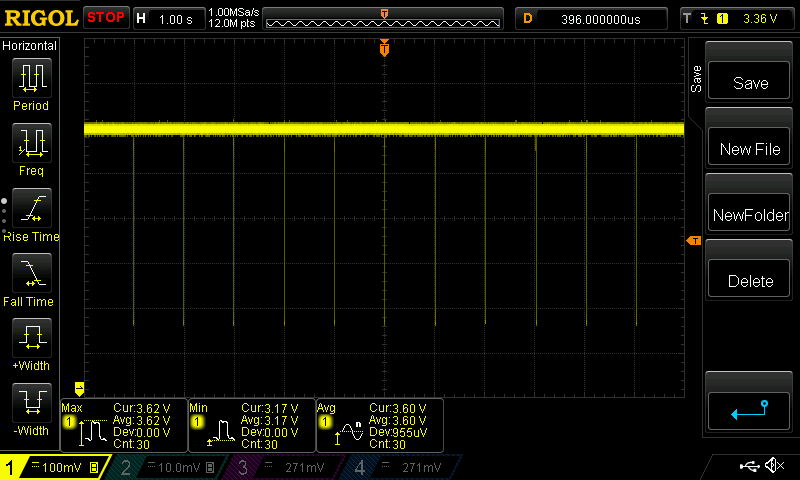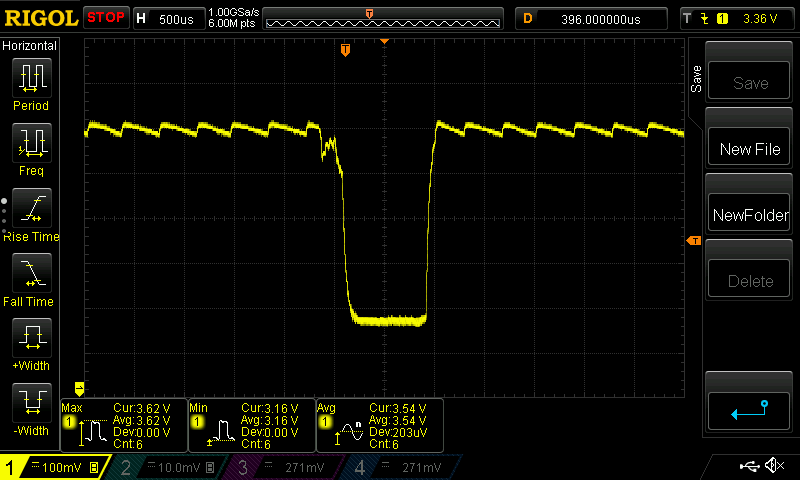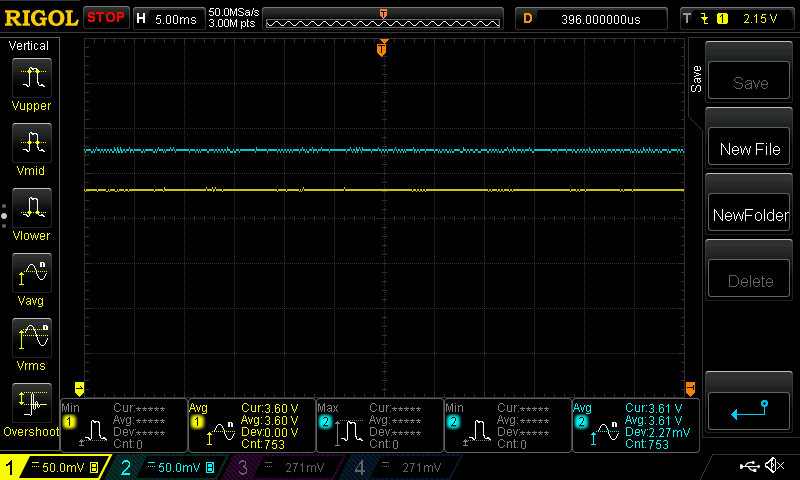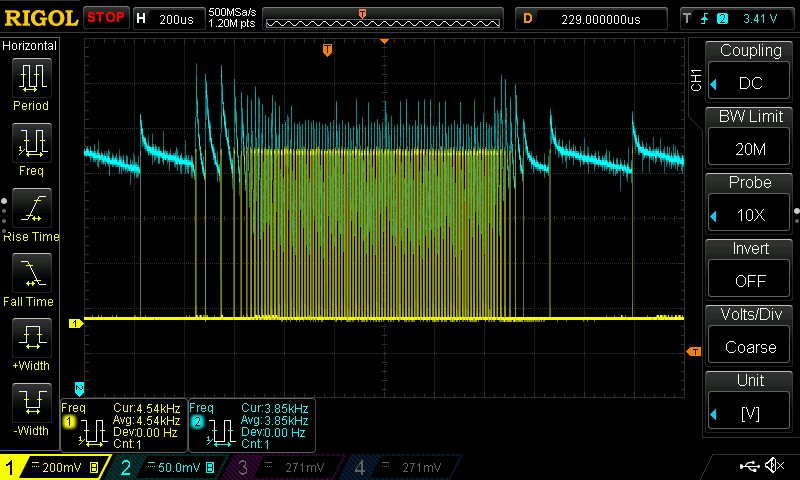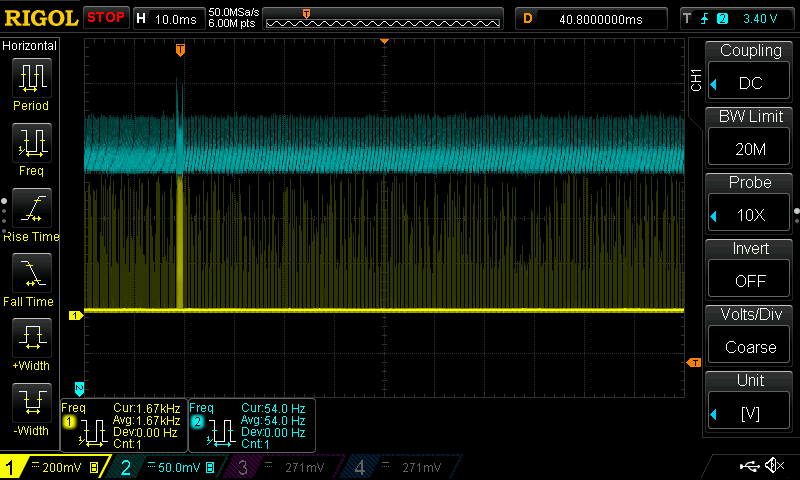Other Parts Discussed in Thread: MSP-FET, , CC1101
Tool/software: Code Composer Studio
Hi,
I'm working with a MSP430 and a RF module. Usual RF stuff involves sleeping most of the time, sending a burst of data, and going back to sleep. My application loop is :
- sleeping (approx. 1s)
- TX (around 0.9ms)
- RX (around 10ms)
I'm powering the system with the MSP-FET as usual (I've been using it for 3 years and don't have issues with it on other non-RF projects).
Reference measurements are taken with a scope and a 10-ohm resistor on the low-side (GND). I got these results :
Below is a current measurement of the system on multi-seconds scale.
Below isa current measurement of the system of a single burst zoomed
All looks correct regarding the system specs and what it acutally does.
On the other hand, when removing the scope and resistor and measuring the current with EnergyTrace, I got the following results.
Below is the current measurement of the system on a multi-second scale
Below is a zoom on a single burst
EnergyTrace actually thinks that the current bursts lasts around 1s !
And the average current given by EnergyTrace is around 8mA where the correct measurement is around 170µA
The EnergyTrace weird measrements are reproduced anytime but the "odd-40-60mW current staying after the burst" duration looks random
I'm not sure where the problem stands inside EnergyTrace.
Additional infos :
- I'm using CodeComposerStudio v9.3.0
- In the beginning, I thought it was a bug with the RF module and posted a ticket ( http://e2e.ti.com/support/wireless-connectivity/sub-1-ghz/f/156/t/865643 ) before I actually measured current with a scope and a resistor



